X
wikiHow is a “wiki,” similar to Wikipedia, which means that many of our articles are co-written by multiple authors. To create this article, 17 people, some anonymous, worked to edit and improve it over time.
This article has been viewed 32,990 times.
Learn more...
Ever thought, "I want to make a really cool save at today's game"? Well, then. You'll probably want to read this, then.
Steps
Method 2
Method 2 of 3:
During the Game
-
1Watch the ball.
- If you take your eyes off it for anything other than a quick glance at the goalposts or your players, you might lose sight of it. This can lead to a ball slipping past you easily.
-
2Notice how the other team is playing.
- Are they playing offensive or defensive?
- You can tell what way they're playing by watching how they move around. Are they constantly tackling and doing whatever they can to score a goal? Or do they have 4 defenders that are constantly trying to stop your team scoring? Some things are subtler, like the other team's positioning.
- If they're playing offensive, then you need to stay alert. Goalkeepers can be not really alert when the opposing team is scoring, if they're fast enough.
- If they're playing defensive, be more alert about how your team is positioned. It's better to not have to make a save at all by having your defenders in the right position, especially with a defensive opposition, than having to make a save every minute or so.
-
3Figure out the opposing strikers' strategy.
- They might be constantly crossing to each other, or just staying close and weaving the ball through your players.
- Watch how they move around, kick the ball, pass it.
- Do they have any specialties? Do they have a big kick, or do they trick their way around players? Things like this can really help.
Advertisement
Method 3
Method 3 of 3:
Making the Save
-
1Know when to come out at the player, and when to stay put.
- This is hard to create a how-to for. Knowing when to come out is more of an instinct that you will gain as a goalkeeper.
- There is a little trick, though. Closing the angle. If you're fast enough, and it's 1 on 1, run out most of the time. It will either scare the player off, having them jump away from the ball, letting you pick it up, or, they'll kick, and it will go wide, unless they're really good at curving the ball around someone.
- Knowing when to stay put, or when to close the angle, is a good trick to have up your sleeve, because most times it will end up as a goal saved, or a goal scored.
-
2Know what type of save you should make.
- There are more types of saves than just a diving save. There are:
- Blocking Saves: These are just saves you make by just blocking the ball. You do this by getting your body in front of the ball, and trying to catch it. If you don't catch it, no need to worry: The ball still got you in the chest, you have another chance!
- Ground Saves: These are when the ball just slides along the ground. To make the save, you dive onto the ground, sliding in the direction of the ball. Be careful with this type of save; it can be dangerous, if you land wrong.
- Rotation Dive, or 'Windmill' Dive: These are one of the most difficult dives known, being for when a ball is coming right beside you. Normally a reaction kick save will be the only way to save it, but occasionally, you can do a windmill dive. Gravity won't allow you to fall fast enough to reach a ball right beside you in time, so you have to force yourself to the ground. Do this save by swinging your body around at the ball, hopefully deflecting or catching it. Be careful, because you can land wrong and injure your shoulder or head.
- Diving Save: This is a save that is for when a ball is in the air, coming into the goal. You have to know what way the ball is going, and dive to that side, throwing yourself into the air. Your legs need to be strong to get that ball in the corner, or get the ball that's a bit high.
- Rolling Ball Save: This save is just for when the ball is rolling towards you, not that threateningly. To do this, you move towards the ball, collapsing to the ground with not enough space between your legs to have the ball go through. You then scoop the ball up with your arms. This save is not dangerous at all.
- Reaction Kick Save: This save is more instinctive. The ball is coming at you, and you kick your foot out to the side, stopping the ball, and clearing it at the same time. You don't have to always use your hands as a goalkeeper. Most of the best keepers use a mixture of both.
-
3Out of those types of saves, make a decision.
- Is the ball up high, to the side, or just slowly coming towards you? A goalkeeper shouldn't need to think about it once they know every type of save, and what each is good for.
Advertisement
Community Q&A
-
QuestionHow do I know where they're going to kick?
 Community AnswerWhen a player is taking a penalty kick, watch the foot that they plant right before they kick (their last step), the direction that foot is pointing will indicate what side they are aiming for.
Community AnswerWhen a player is taking a penalty kick, watch the foot that they plant right before they kick (their last step), the direction that foot is pointing will indicate what side they are aiming for. -
QuestionAfter catching the ball, what normally is to be done to make the ball playable and back in the game again?
 Community AnswerAfter the keeper has successfully saved the ball, he/she can throw the ball to a nearby teammate, drop-kick the ball up the field to a teammate, or, very rarely, drop the ball and dribble up the field.
Community AnswerAfter the keeper has successfully saved the ball, he/she can throw the ball to a nearby teammate, drop-kick the ball up the field to a teammate, or, very rarely, drop the ball and dribble up the field. -
QuestionHow do I stop one-on-one?
 Community AnswerOne of the best things to do in this situation is to come closer to the attacker if he is in the penalty box.
Community AnswerOne of the best things to do in this situation is to come closer to the attacker if he is in the penalty box.
Advertisement
Warnings
- Never give up.⧼thumbs_response⧽
- Don't get hurt, sometimes soccer can be a bit on the dangerous side.⧼thumbs_response⧽
Advertisement
About This Article
Advertisement
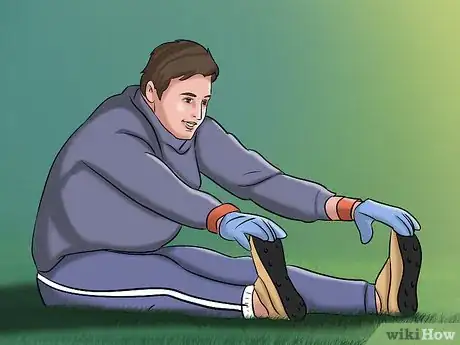
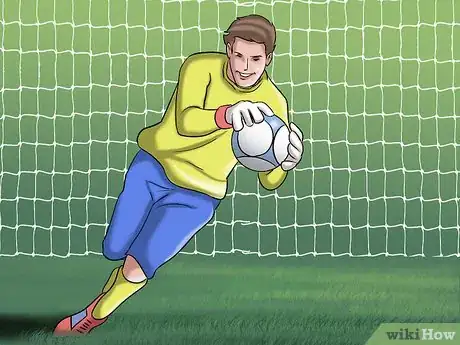
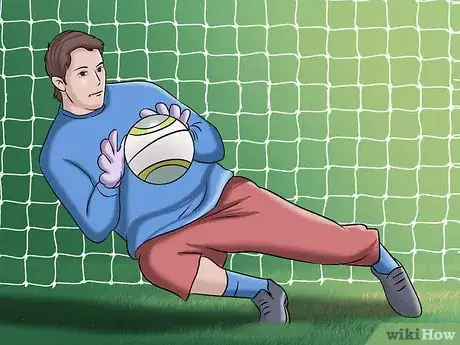

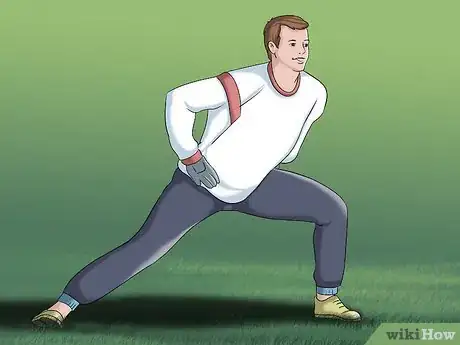
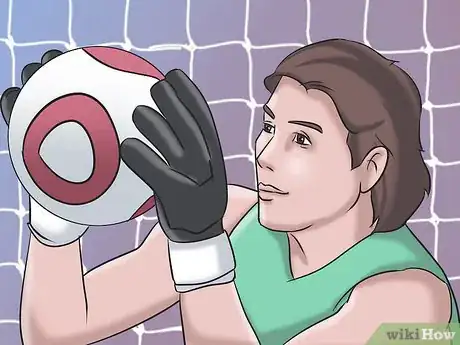
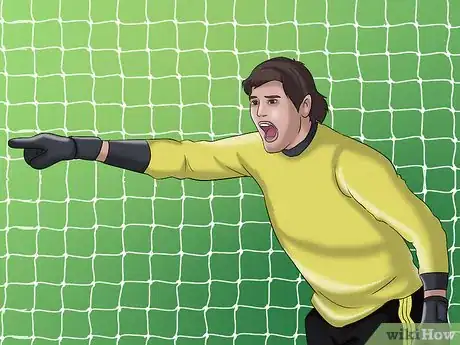
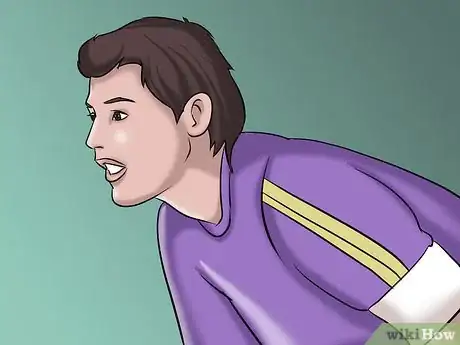
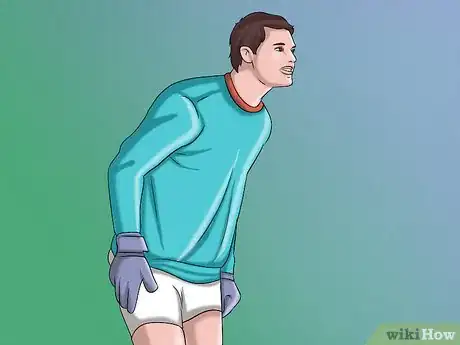
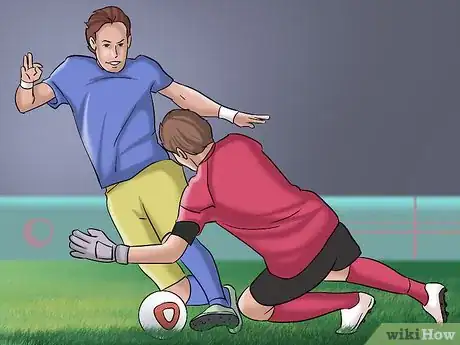
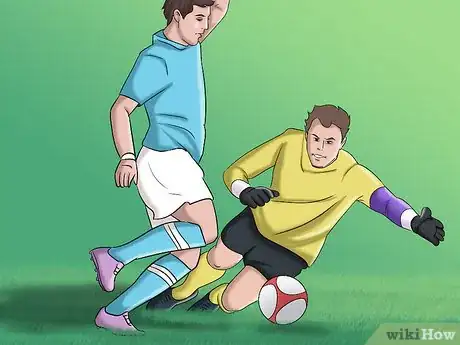
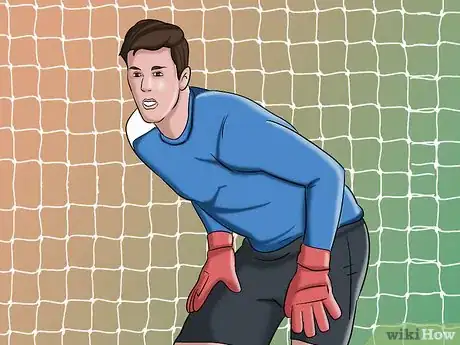
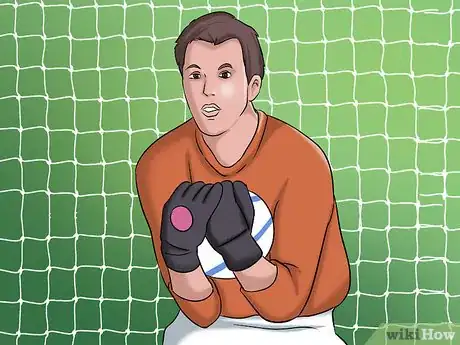
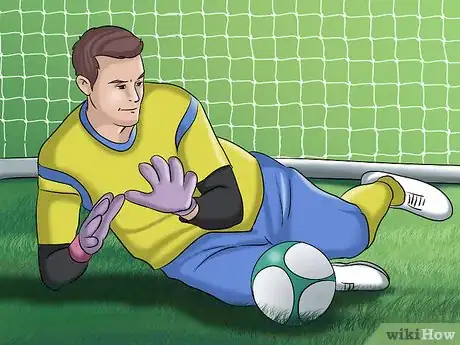

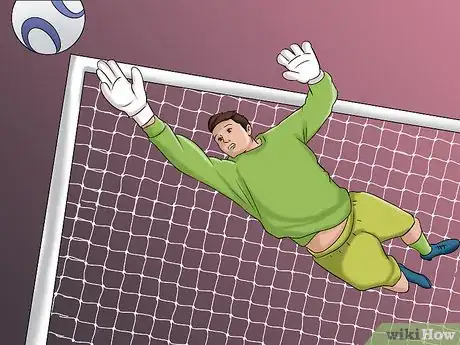
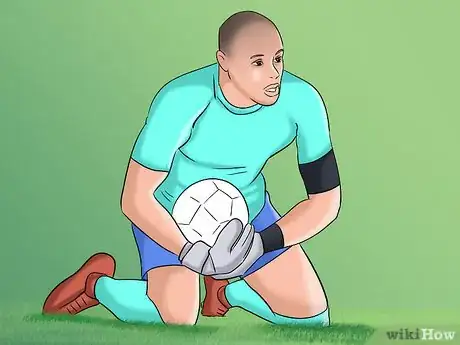

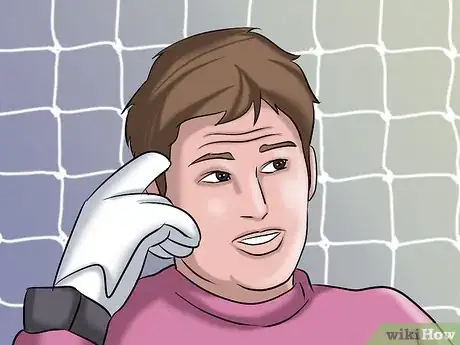

-Step-11-Version-2.webp)

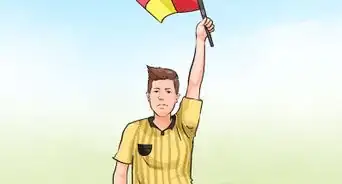

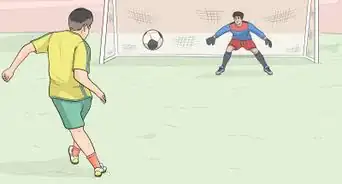
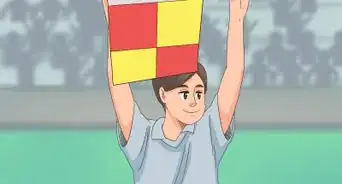





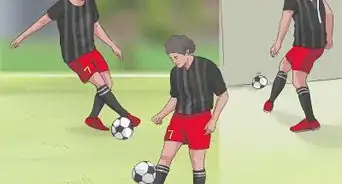

-Step-11-Version-2.webp)





































